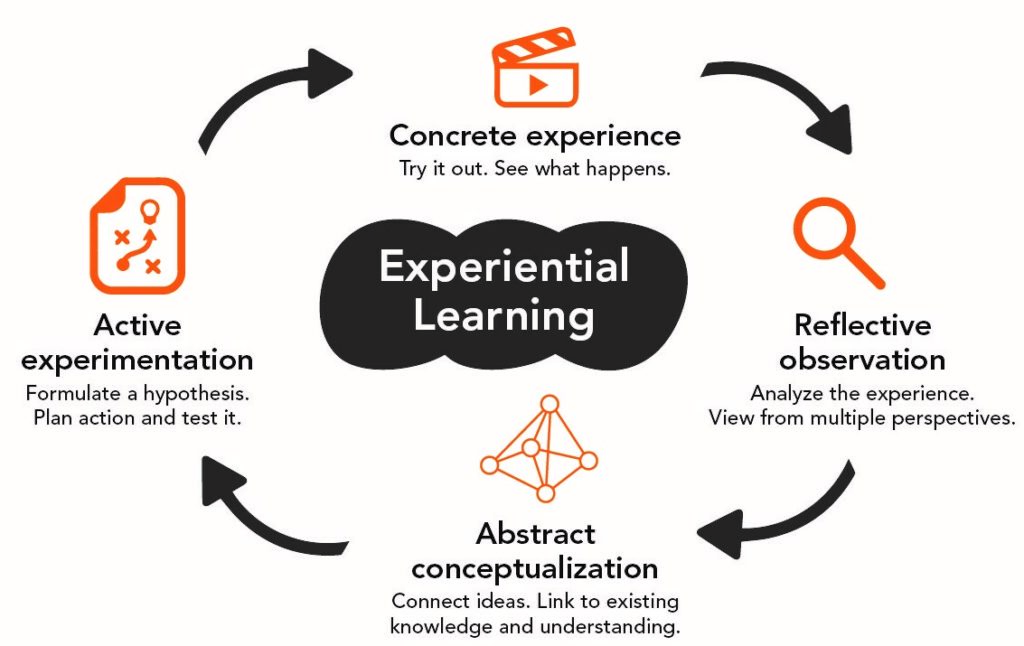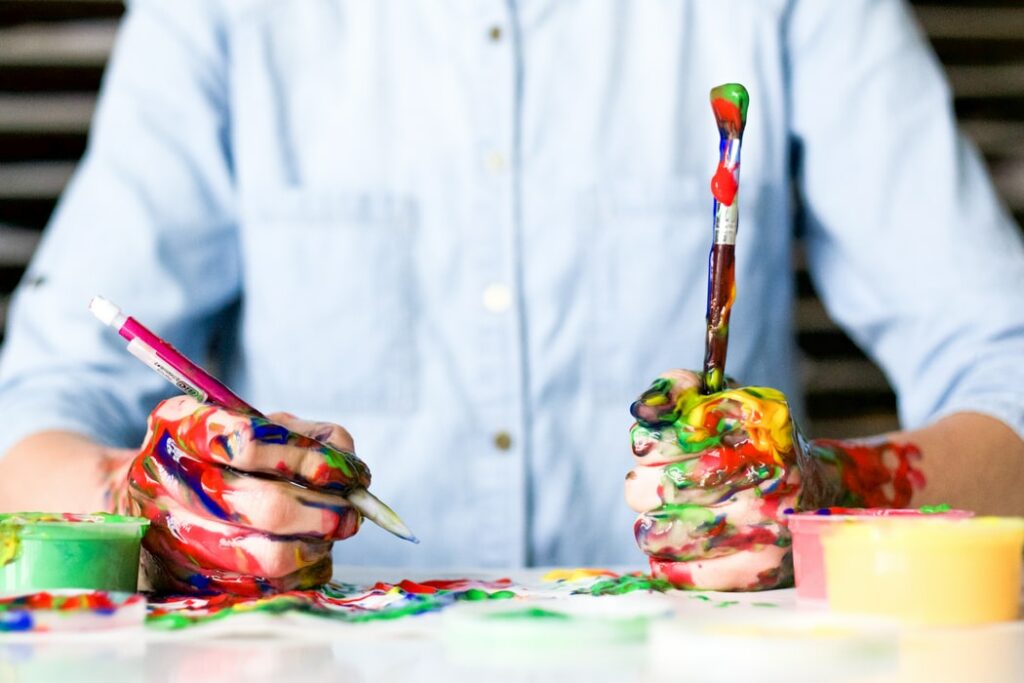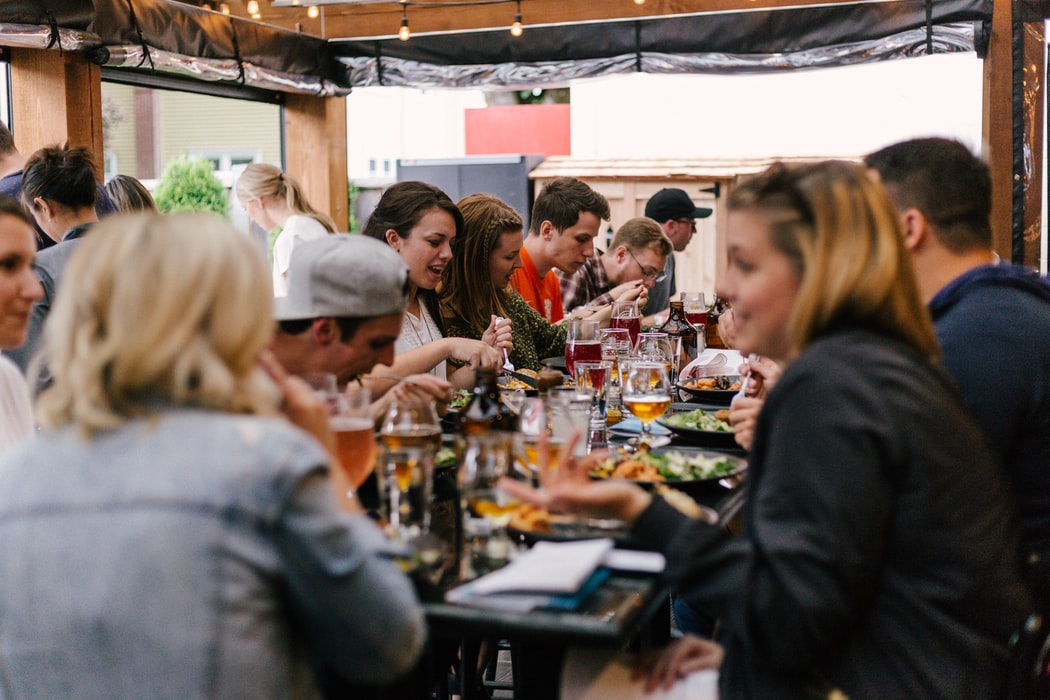“Learning is experience. Everything else is just information.”
Albert Einstein
One of the best parts of learning something is when you actually experience that in your life in any type of way. In my opinion, that is why it is one of the best learning approaches for students.
What is Experiential Learning?
Many different theorists have defined Experiential Learning in so many ways that picking one accurate definition is hard. For example, SFU defines experiential learning as: “the strategic, active engagement of students in opportunities to learn through doing, and reflection on those activities, which empowers them to apply their theoretical knowledge to practical endeavors in a multitude of settings inside and outside of the classroom.” [1]
Others like Sophocles have defined it by, “One must learn by doing the thing, for though you think you know it- you have no certainty until you try.” [2]
With any definition, I believe it’s hard to argue that experience will not lead to any learning when the circumstances are proper. This type of learning process involves students more deeply and extensively in the whole process rather than just listening to the “knowledge” the instructor provides. Students have a chance to apply their learnings from their classroom to a real-world environment where they deal with entirely undocumented problems and come up with their own solutions to them. I strongly believe that this is a very crucial part of any learning process as students get to test their ideas in reality and not just bury those thoughts popping up during the learning process. The video below is a great short demonstration of how we all learn naturally using experiential learning. We might not even know that we have been using this approach since a young age!!
How to?
Yes, this is a great learning process and approach, but how would we implement this? By acting on every new learning outcome. Many theorists have worked on this learning process. One of them David Kolb came up with a “learning cycle” that comprises of four phases to follow for achieving the “right” conditions under which students can learn [3].

There are four steps in this proposed process – Experience -> Reflect -> Think -> Act. In the first process, the learner has a “concrete experience” where the learner encounters a new experience, which is followed by “reflection” about the experience on a personal basis. The next step is to conceptualize the meaning of the experience and understand how the ideas learned previously can be applied in the real-world and finally lead to the decision to act and experiment upon. The cycle might seem complicated but it is so natural that learners engage in it without being aware that they are picking up valuable knowledge and learning on the way. It’s also perfectly fine to focus on other phases of the cycle as long as there is some learning going on.
How does it align with our Topic?
My team is working to design an Elementary Mathematics course for grade 2 learners. I strongly believe this is an important part for learners to understand the basic math concepts and how they are relevant and fundamental to the real world activities. Our course learning outcomes like “Being able to recognize when to apply these concepts”, “Utilize comparisons with familiar quantities to make sense of presented quantities” and “Recognizes patterns in presented problems and applies appropriate math strategies to efficiently solve problems” can be taught using this learning approach. These outcomes match to real world applications and basic fundamentals so one of the best approaches for this is Experiential learning. Instructors have to take care in recreating these situations completely because this is a crucial point in a learner’s education and the basic concepts taught through this process will be with the students for their whole life!! Hence, this learning strategy definitely applies to our topic and we should try to integrate it into our Interactive Learning Resource.
Conclusion
Learning occurs in any environment and continues throughout our life. Most of the learning in our life is the way we approach it and try out new things. Experiential learning empowers the learner to take charge of their own learning and development. It is the instructor’s challenge to create the right setting for their learners but it’s the learners who have to learn, retrospect and experiment with their different experiences.
Attributions
Cover Photo by UX Indonesia on Unsplash
References
[1] “Experiential learning: learning by doing (2)” Teaching in a Digital Age. https://opentextbc.ca/teachinginadigitalage/chapter/4-4-models-for-teaching-by-doing/
[2] J. W. Gentry, “What is Experiential Learning?” https://wmich.edu/sites/default/files/attachments/u5/2013/WHAT%20IS%20EXPERIENTIAL%20%20LEARNING%3F%20%20.pdf
[3] “Experiential Learning Theory” Mohawk College. https://www.mohawkcollege.ca/employees/centre-for-teaching-learning/experiential-learning/experiential-learning-theory



